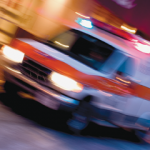If you drive and text, talk (without a hands-free device) or tweet, you’re in trouble. And, that trouble now extends to riding a bicycle, if Governor Jerry Brown signs Senate Bill 28 into law, cyclists can also be cited.
“Distracted driving” is already against state law, but distracted bicycling had not been. Original legislation that would have held distracted cyclists accountable on the same basis as drivers was scaled back after the California Bicycle Coalition successfully lobbied for lower fees after arguing that cyclists could not do as much damage as drivers of cars.
Authored by 11th District State Senator Joe Simitian (D-Palo Alto), the bill sharply increases fines from $20 to $50 for a first offense and from $50 to $100 for a subsequent offense for talking while driving without a hands-free device or texting on a cell phone or any electronic device. Bicyclists would run into a $20 first-time offender ticket and $50 for the next. The new legislation would also: add a point against a holder’s driver’s license only after a second violation while driving, not cycling; direct that $10 of each fine be provided for education programs about the dangers of distracted driving; permitstexting only if it is voice-activated and hands-free.
What has steamed some is that the total tariff for drivers, after adding state and local court fees and other surcharges and penalties, escalates the first offense from the current $208 to around $328, and for subsequent offenses from $328 to around $528. Adding surcharges to moving violation tickets began over 50 years ago when small fees were added to traffic tickets to pay for drivers’ education. Since then, tacking on surcharges for a variety of reasons, including in 2009 for a “conviction assessment” to pay for renovating and building courthouses, has resulted in markups of fines for moving violations from 100 to 200 percent. The legislation now on the governor’s desk contemplates no added fees and surcharges to the ticket charges for cyclists.
In an interview, Simitian said that even with the fee increase, cell phone penalties are a fraction of the average $100 moving violation fine. “We built into the legislation that $10 of the initial $50 and any subsequent ticket would go for public education about the dangers of ‘distracted driving,’” he stressed. “With any campaign to change behavior you need public education, enforcement and a significant deterrent [the ticket].”
Simitian began this battle in 2001 when he first introduced cell phone legislation. “It took five years to get the eventual legislation passed and two additional years to implement it [as of July 1, 2008],” he said. Compliance, according to Simitian, is around 60 to 70 percent of drivers, according to statistics from the Automobile Club and the state Office of Traffic Safety. The stats are impressive — 20 percent decease in fatalities and collisions the first year, 700 fewer lives lost on an annual basis and 75 to 100 thousand fewer collisions in the measuring year. Simitian argued that increasing penalties would further decrease distracted driving accidents. He also argued that distracted cyclists can cause automobile accidents, hence the incorporation of the provisions covering bicyclists.
Simitian said he had to deal with the “too much government” argument with other legislators and with the public in trying to get the legislation passed. “Nanny government is when we protect the people from themselves,” he said. “With this legislation, we are protecting people from each other.”
A November 2010 survey by the state Office of Traffic Safety of 1,671 drivers found that drivers believed cell phone use is the second biggest danger on California highways, after speeding and aggressive driving. In June 2010, the California Highway Patrol issued a report stating: “Cell phones are the leading identifiable contributing factor to inattentive driver crashes in California.”
Under California Vehicle Code 23124, a person under 18 may not drive and use a cell phone, even if equipped with a hands-free device. An exemption exists for everyone during an emergency.










